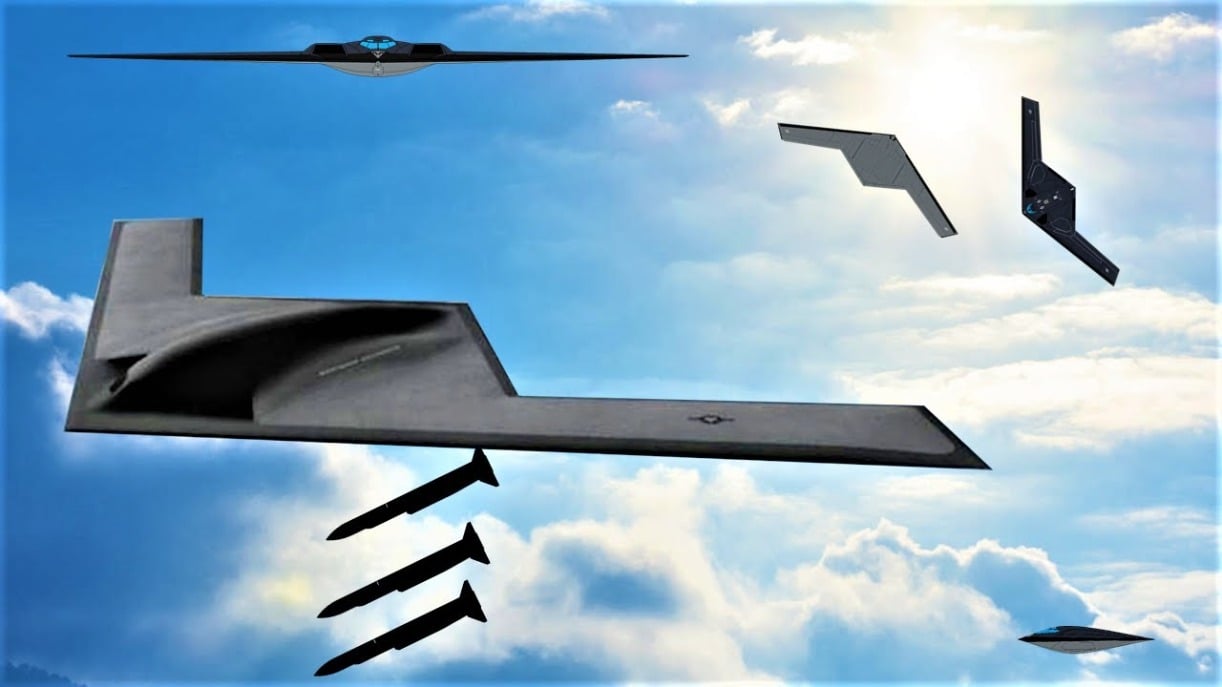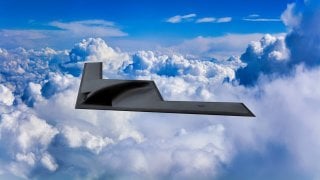B-21 Raider Bomber 'Numbers' Nightmare Has No Easy Fix
The B-21 Raider, Northrop Grumman's next-generation stealth bomber, is poised to revolutionize U.S. military capabilities. However, by the early 2030s, the U.S. Air Force may only have between 24 to 30 operational B-21s, far below the desired fleet size.
Summary and Key Points on the B-21 Raider Numbers Problem: The B-21 Raider, Northrop Grumman's next-generation stealth bomber, is poised to revolutionize U.S. military capabilities. However, by the early 2030s, the U.S. Air Force may only have between 24 to 30 operational B-21s, far below the desired fleet size.
-Budget constraints and slow production rates are contributing to this limited rollout, despite the growing threats from China and Russia.
-Comparatively, past bombers like the B-52 and B-1 were produced at higher rates. As adversaries bolster their strategic bomber capabilities, the U.S. risks falling behind, with the B-21 potentially arriving too late and in too few numbers.
The B-21 Raider and How Math Is Going to Be a Problem
The Northrop Grumman B-21 Raider is clearly getting positive headlines and could truly be a game changer for the U.S. military.
However, the United States Air Force is unlikely to have significant numbers of the next-generation aircraft by the early 2030s.
Eric Tegler, writing for Forbes.com months back, reported that the Air Force could have somewhere between 24 and 30 operational Raiders in that timeframe. He cited forecast data from this year's annual Air Force Association (AFA) convention. He noted that the current timeline calls for the Pentagon to retire the aging B-1 Lancer and B-2 Spirit bombers as the B-21 Raider enters service.
According to Mark Gunzinger, director of future concepts at the Mitchell Institute for Aerospace Studies and panelist at the AFA, the current Department of Defense (DoD) plan is to have a bomber fleet of 133 aircraft by 2033 – lower even than the current 141 B-1, B-2, and B-52 Stratofortress bombers now in service, which is already smaller than at almost any time in the history of the Air Force.
Coming Not Soon Enough: Fewer Than a Dozen a Year
Advanced aircraft are apparently not cheaper by the dozen, and the article in Forbes quotes Gunzinger, stating that, “it looks like the B-21 acquisition rate is going to top out at around 10 per year sometime in the 2030s.”
The Air Force had originally envisioned a fleet of 132 B-2 Spirits, but due to the project's considerable capital and operating costs, lawmakers shrank the program to just 21 aircraft. Following a 2008 crash, the Air Force has 20 in service – and those aircraft are expected to remain in service only until 2032.
Gunzinger told Tegler that his warnings that the bomber and fighter forces will reach "new lows this decade before they increase in size," and suggested that lawmakers should seek to address the threats from China. The think tank director further suggested that this isn't about production capability, and instead is driven by budgets, and that the plants that built the current B-2 Spirit had envisioned producing those bombers at a much higher rate.
Past bombers – notably the B-47 Stratojet, B-52, and B-1 – met a higher production rate of more than 20 aircraft per year. It is true that those previous aircraft were far cheaper to build, but Gunzinger suggested that the Air Force isn't pushing hard enough to build more aircraft, while lawmakers and the White House simply fail to see the need even as the B-21 is set to be the backbone of the bomber fleet.
What Are Beijing and Moscow Doing?
It is also true that the United States is currently just one of three nations, along with Russia and China, currently operating long-range strategic bombers. Russia's fleet is aging and Moscow has struggled to produce even its older designs – like the Tupolev Tu-160 White Swan (NATO reporting name Blackjack) – in any significant number, while it still operates the propeller-driven Tupolev Tu-95 (NATO Reporting name Bear). However, Moscow maintains a significant number of those older bombers and shows no signs of retiring the aircraft anytime soon.

Moreover, China has ambitious plans for its People's Liberation Army Air Force (PLAAF) to become a major bomber power, just as the People's Liberation Army Navy (PLAN) has become the largest naval force in the world. Beijing is currently believed to be developing at least two strategic bombers that could reach Guam from mainland China.
While the U.S. has allies that have tanks and fighters it can always depend on; it stands alone against these near-peer adversaries when it comes to bombers. The B-21 Raider does not seem to be on track to get here soon enough and certainly not in large enough numbers.
Author Experience and Expertise
Peter Suciu is a Michigan-based writer. He has contributed to more than four dozen magazines, newspapers, and websites with over 3,200 published pieces over a twenty-year career in journalism. He regularly writes about military hardware, firearms history, cybersecurity, politics, and international affairs. Peter is also a Contributing Writer for Forbes and Clearance Jobs. You can follow him on Twitter: @PeterSuciu.
All images are Creative Commons and Shutterstock.


